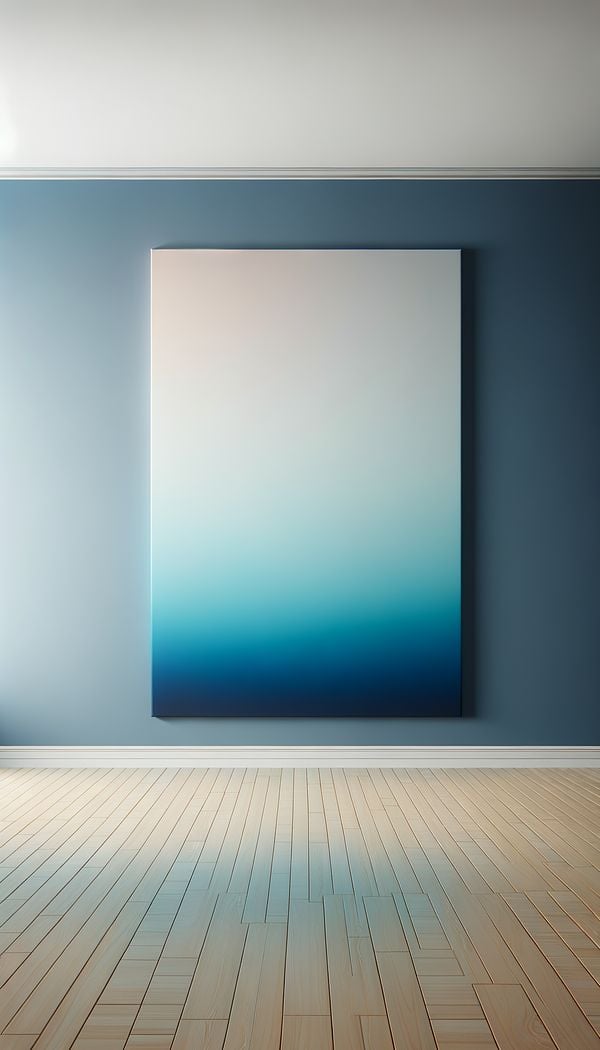What is Ombre?
Ombre is a design technique featuring a gradual blending of one color hue to another, usually moving tints and shades from light to dark.
Description
Ombre, derived from the French term meaning "shadow" or "shade," has become a popular technique in the interior design world thanks to its visually striking and smooth transition from one color to another. This technique can create a serene and calming atmosphere in a space, making it a favorite among designers looking to introduce a sense of peace and elegance. The beauty of ombre lies in its versatility; it can be bold or subtle, depending on the color palette chosen, and can be applied to various materials and surfaces including walls, fabrics, and decorative accessories.
The process involves meticulously blending multiple hues of the same color, or different colors, to achieve a seamless gradation. This can be a challenging technique to master, but when done correctly, it can add depth and movement to spaces, making them feel more dynamic and thoughtfully designed. Ombre can easily adapt to fit any decorating principles and elements, aligning with styles ranging from modern and minimalist to romantic and rustic.
In addition to aesthetic appeal, ombre can also be applied in a way that enhances the spatial perception of a room. For example, using lighter shades near the ceiling and darker tones near the floor can make a room appear taller. Similarly, transitioning from dark to light colors can make a small room feel more spacious and open.
Usage
In interior design, ombre is often seen on walls, where the technique creates a distinctive backdrop for rooms of any style. It's also popular in textiles and upholstery, where fabrics like curtains, cushions, and rugs featuring ombre patterns add a soft, layered look to interiors. Beyond textiles, ombre can be found in lighting fixtures, where glass or fabric shades transition from one color to another, casting a unique and atmospheric glow in the space. Furniture pieces, especially upholstered items and woodwork, can also be designed with ombre effects, adding a contemporary edge to classic forms.
FAQs
-
Can ombre be applied to small spaces?
Yes, ombre can be effectively applied to small spaces, often making them appear larger by using lighter shades that transition to darker tones. This visual trick can give the illusion of more space.
-
Is ombre only suitable for modern interiors?
Not at all. While ombre fits naturally into modern and minimalist interiors, its adaptability means it can also enhance traditional or vintage styles. The key is in selecting the appropriate colors and application techniques to match the decor.
-
Can I create an ombre effect with any color?
Absolutely. Ombre can be created with any color palette, from neutrals to bright, vivid hues. The selection depends on the desired mood and style of the room. Neutral ombre tones can offer a subtle, sophisticated look, while vibrant colors can add drama and energy.
-
How do I choose the right colors for an ombre effect?
When choosing colors for an ombre effect, consider the overall atmosphere you wish to create. Begin with a base color that fits the room's style and mood, then select adjacent tints or shades for a smooth transition. Consulting a color wheel can help identify harmonious color combinations.
Practical Application
To achieve a stunning ombre effect in your space, start by planning your color transition and where it will be applied—whether on a wall, fabric, or decorative item. Use painters' tape to mark boundaries if working on a wall and blend the colors while the paint is still wet to ensure a smooth transition. For textiles, look for fabrics already featuring ombre designs or consider custom solutions from textile artists or suppliers. Pay attention to the lighting in the room, as it can significantly affect how the ombre colors are perceived. Do not hesitate to experiment with different combinations to find the perfect ombre look for your space.
-
Lighting111 articles
-
Decorating Principles & Elements330 articles
-
Color & Patterns154 articles
-
Textiles & Upholstery252 articles
-
Wall Treatments & Finishes157 articles
-
Tapered LegA Tapered Leg is a furniture leg that becomes progressively narrower towards the bottom.
-
FrescoFresco is a technique of mural painting executed upon freshly laid wet plaster.
-
CushionA soft, padded textile item designed for support or decoration.
-
PlasterPlaster is a building material used for coating, protecting, and decorating walls and ceilings.
-
PillingPilling is the formation of small, fuzzy balls on the surface of a fabric due to wear or friction.
